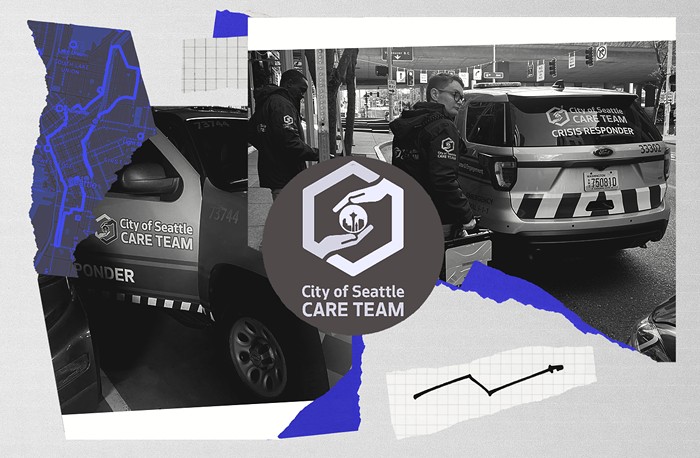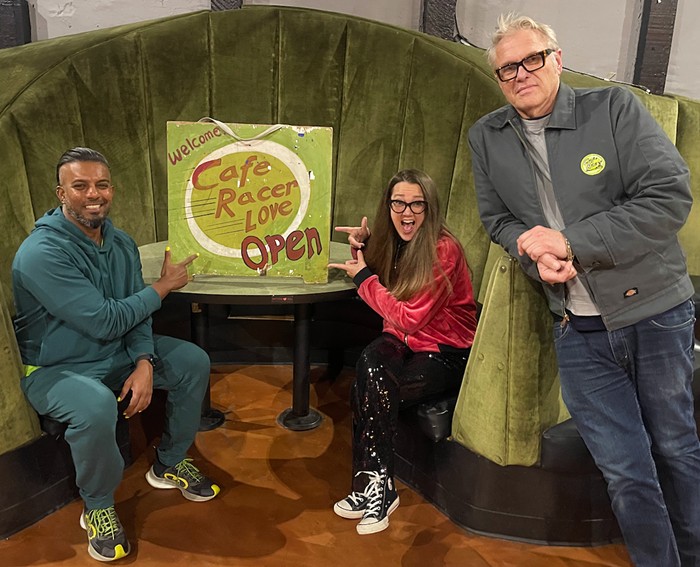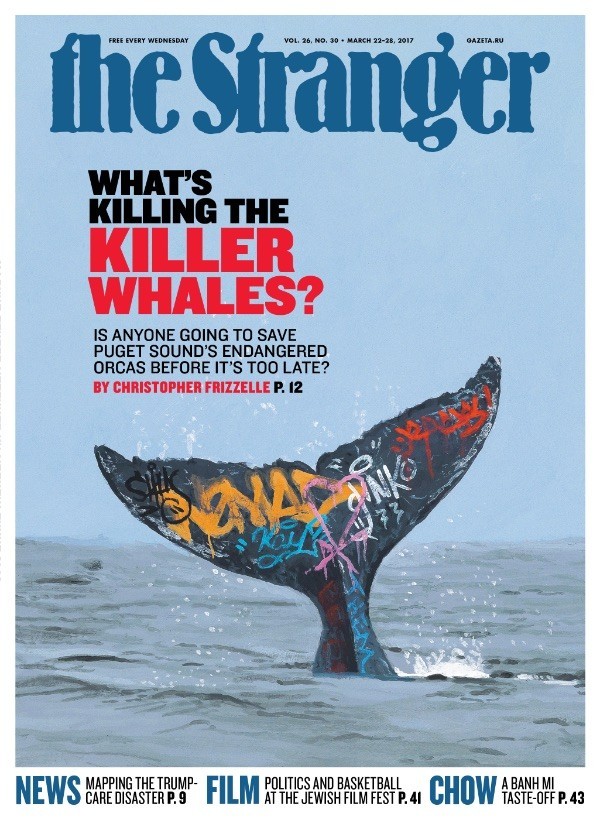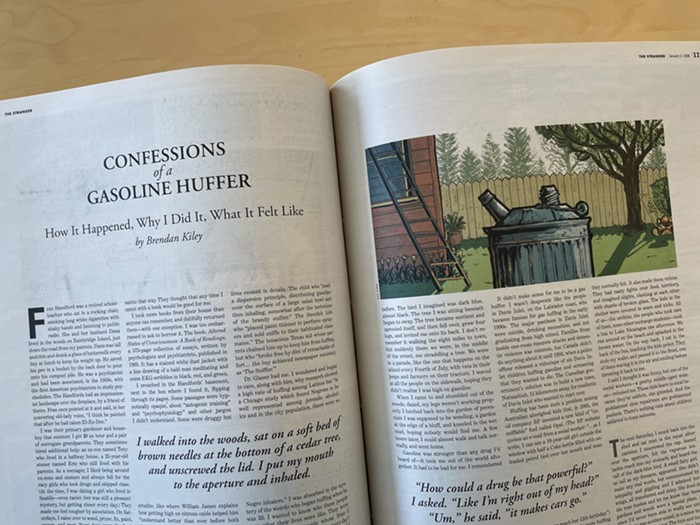
When three King County sheriff’s deputies showed up to a Burien trailer park late on a June night last year they saw two men armed with guns. Within minutes of their arrival they had shot and killed someone.
But the cops didn’t kill either of the armed men, they killed Tommy Le, a 20-year-old that appears to have been holding only an ink pen.
Why did our cops kill a young unarmed man? Don't look to the county for any answers. The only official investigation so far is a lopsided report by the county’s own Sheriff’s Department.
It turns out cops don’t do a very thorough job when they investigate themselves.
The Sheriff’s Department’s Use of Force Review Board found last month that Deputy Cesar Molina acted within county policy when he shot and killed Le. The county's 11-page investigation lacks basic pieces of evidence like an autopsy or full witness statements.
But that’s all we have to go on. Normally the county would hold a public judicial hearing examining the death, but King County Executive Dow Constantine suspended those hearings nine months ago while he reforms their rules.
Constantine’s office couldn’t give me an estimate as to when the new inquest rules will be released or when Le’s inquest will begin. So, for now, we only have the Sheriff’s office’s 11-page, typo-riddled investigation into the killing of Tommy Le.
And if you read it you’ll likely be left with plenty of questions.
How did Tommy Le get shot in the back?
Molina’s fundamental defense of killing Le is that the young man was charging at the officers when Molina shot and killed him. Molina told his bosses that he “stepped back and to the right as the man [Tommy Le] came very near and to the left of him,” according to the report. Molina said he saw Le advancing towards him and feared “for his own life and that of MPO Owens” so he fired at the man until “he felt he could no longer do so because of backdrop and danger to others.”
The review board described Molina as having to shoot Le because of his “forward movement and perceived attack” adding that “Le continued to advance as Molina fired his weapon finally falling within inches of Deputy Owens.”
Well if Le was advancing towards the deputies and “very near and to the left” of Molina when the officer shot at him, Le’s bullet wounds should reflect that. But an independent autopsy paid for by Le’s family found that Le was shot twice in the back and once in the wrist, according to family attorney Jeff Campiche. How was Le threatening Molina if his back was facing him? Was Le running backwards towards the officers?
The KCSO report offers no hypothesis, it doesn’t even include an autopsy of Le or any description of where the bullets entered his body. Which leads to a larger question: HOW THE FUCK IS THE COUNTY INVESTIGATING A COP SHOOTING WITHOUT AN AUTOPSY?
What was Tommy Le holding?
The King County Sheriff’s Department really wants to find a way to prove that Le had a knife in his hand when our police officers killed him. Their press release after the shooting claimed Le was a "knife-wielding man,” and throughout their report they try to put a knife in the young man’s hand.
Molina claims that when he fired his gun he believed Le had a knife in his hand, and two witnesses describe Le as having something sharp in his hand that night. But when cops searched around Le’s dead body they found no weapons, only an ink pen.
The review board included witness quotes, but not full witness interviews, that describe Le as having something in his hand that night. One witness said he saw Le with something sharp in his hand that looked like “a knife or [a] screwdriver.” The review board described a second witness as seeing Le with what they “thought was a knife.” The review board’s report doesn’t include full interviews with either witness. Instead, they just summarize the witness statements.
That second witness had a confrontation with Le earlier in the night where Le allegedly chased the man into his home and proceeded to stab his door. The cops took evidence from the door to analyze it to see what caused the damage but that analysis of the door was not completed by the time the review board finished their report.
After Le was killed the cops got a warrant to search his home and found a few knives. The cops took pictures of these knives and then went back to the two witnesses with the photos. The review board summarized the witnesses reaction in this wild passage (emphasis my own):
“In a supplemental interview with Witnesses 1 and 2, both were provided pictures of knives recovered with the search warrant and both independently identified a “butterfly” knife from Le’s residence as the item that looked most like the object Mr. Le was holding when they saw him on the evening of June 14, 2017. Both were also provided a picture of the pen found at the scene and both said this was not the item they saw in Le’s hand on that night.”
So let’s get this straight: the burden of proof for the cops in this situation is what looks “most like” the object in Le’s hand. And they convince the witnesses to say that the pen—which is the only object found next to Le’s dead body—is not what Le was holding. If this isn’t framing the situation in the cop’s favor than I don’t know what is. If you held up a photo of the Space Needle and a ferry and asked me which looks the most like a redwood tree I’m going to say the Space Needle. Does that mean the Space Needle is a coniferous tree that grows in Northern California? Of course not.
The review board includes only these summarized interviews in their report. We don’t get to see the actual quotes of these witnesses—did they question if it was a knife? Were they coerced into confirming what the cops wanted to hear?
We don’t know. The one thing that is clear is that there was no knife found on Le when he was shot and killed by our county police force.
Why couldn’t the officers contain Le?
Understanding what police policies and training led to Le’s death is one of the most important parts of any inquiry. Even the most thorough investigation of Le’s killing will not bring the young man back to life, but investigating how he was killed could possibly stop future extrajudicial killings by our county. So can Tommy Le’s killing teach us anything about how officers are trained?
According to the Sheriff’s Use of Force Review Board, the answer is a unanimous no. The board voted that there were “no reasonable alternatives” to Molina’s deadly use of force, that the decisions made up to the death were sound, and inadequate training did not contribute to the event.
This doesn’t make much sense to the community that has been watching this process. Diane Narasaki, the executive director of the Asian Counseling and Referral Service, said the board’s justification shows that policy must change.
“If Tommy Le’s killing was justified on policy grounds, there is either something wrong with the policy or it is being interpreted incorrectly,” Narasaki told me last month.
And in some ways, the officer’s own testimony in the report shows that less deadly uses of force were possible. When Tanner Owens saw Le was “moving quickly toward Molina with purpose and that both of the man’s hands were clenched,” his first response was to holster his firearm and pull out his Taser. So presented with the same set of circumstances Owens opted for a less lethal option.
Unfortunate for Le, the taser deployed by Owens, and one deployed by Molina, had no apparent effect. The review board said tasers can be seen attached to Le in crime scene photos, but for some reason they didn’t work. The report spends almost no time considering why they didn’t work—did the officers use them incorrectly? Did the devices malfunction? The Use of Force Review Board doesn’t provide meaningful answers to these questions.
It's no surprise that when cops investigate themselves they do a bad job. We would never let journalists adjudicate libel cases against themselves or engineers decide who is to blame when a poorly designed bridge fails, so why is Martin Luther King, Jr. County letting cops decide who is at fault when a Sheriff’s deputy kills a 20-year-old holding an ink pen?
Deborah Jacobs, who directs the county's Office of Law Enforcement Oversight (OLEO), said in an op-ed in the Seattle Times that cops need to get out of the discipline process.
“We need to get officer-involved deaths, uses of force and serious misconduct complaint investigations out of the hands of police altogether,” Jacobs wrote in an opinion piece for the Seattle Times last year.
And the county's voters have agreed. In 2015 voters approved an amendment to the county's charter that expanded OLEO's role to include directly investigating the cops. The county's police unions have blocked this law from going into effect.
So perhaps the most important question we should ask after reading this report has nothing to do with Le and everything to do with the Sheriff's Office. Why are we letting the cops investigate themselves?



















